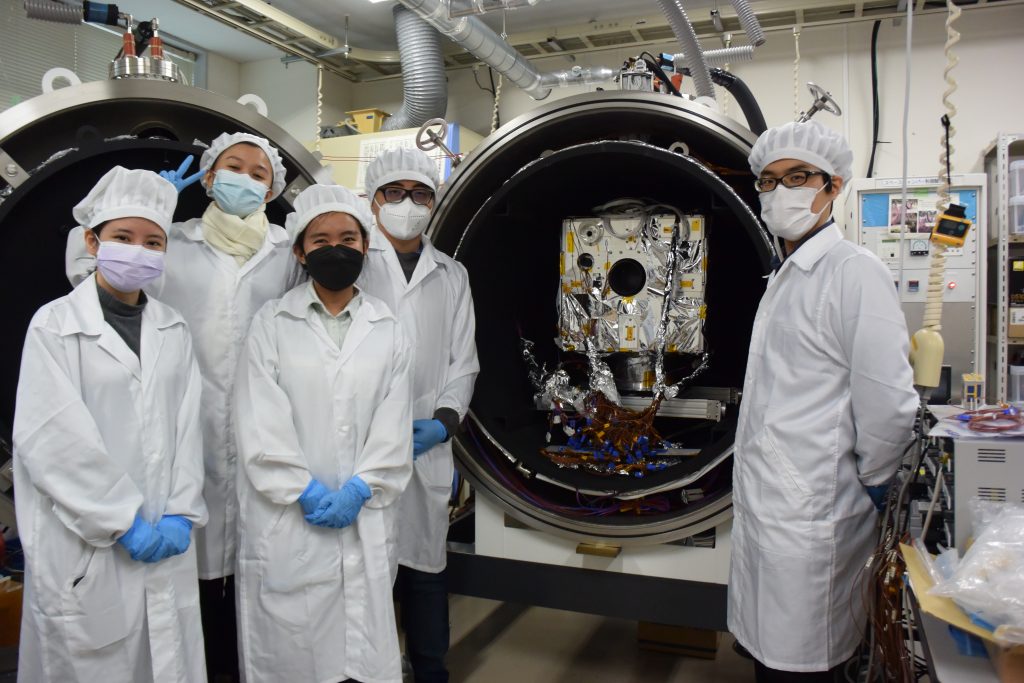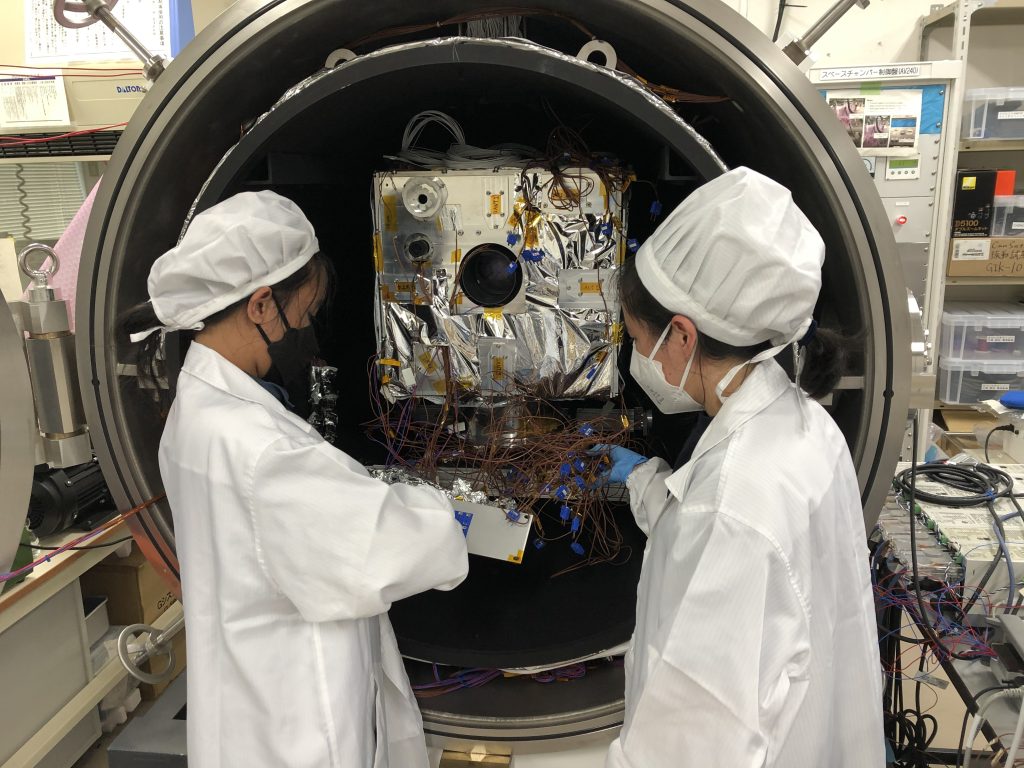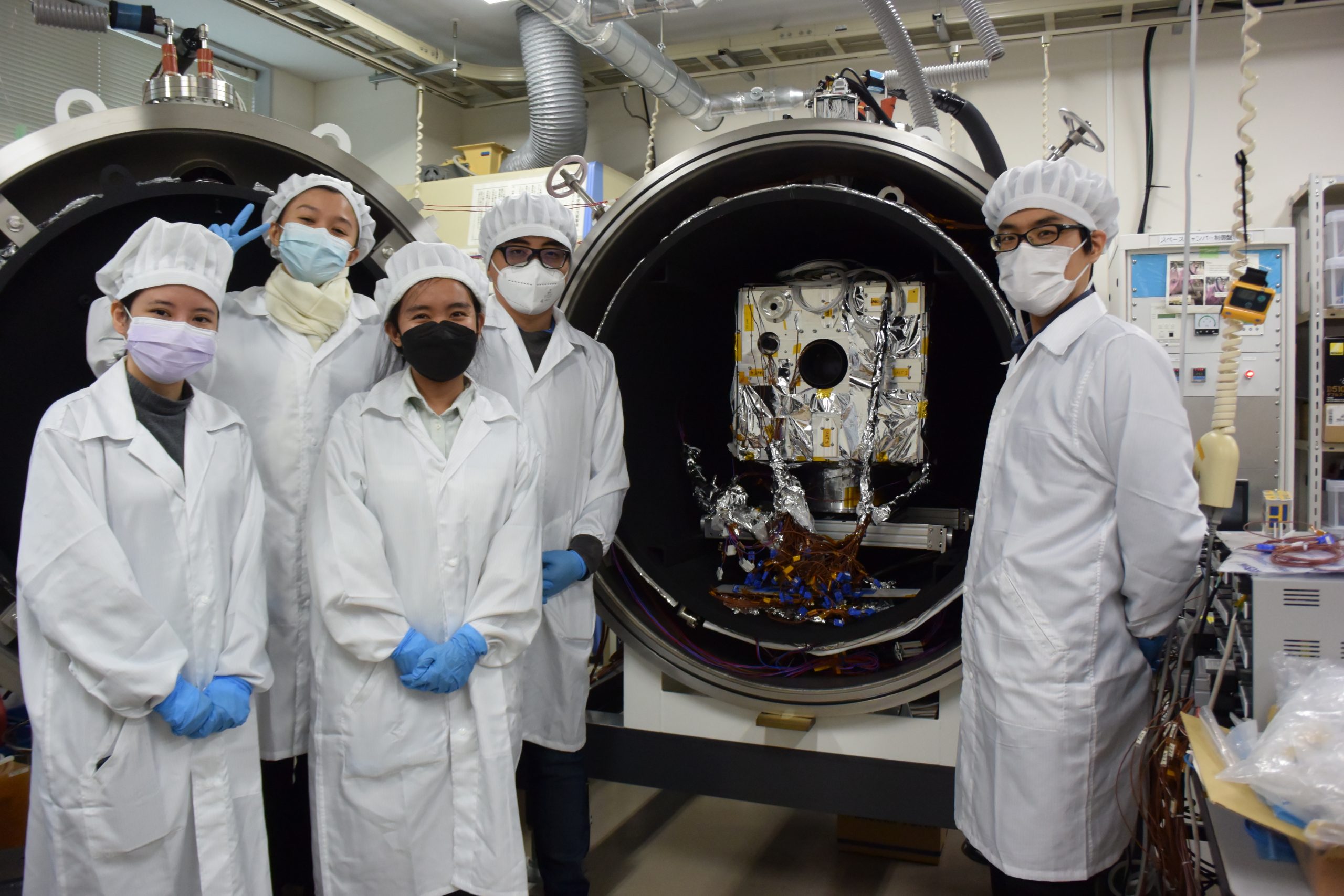“It almost didn’t happen!” said Dr. Maricor Soriano, program leader of the STAMINA4Space program. “Filipino travelers were not allowed to enter Japan because of COVID. But at the last minute, that restriction was lifted and we were able to send our engineers to do the tests.”
Despite the ongoing pandemic, researchers from the STAMINA4Space Program (Space Technology and Applications Mastery, Innovation and Advancement Program) did Assembly, Integration and Testing (AIT) activities of the satellite structure and payload for the development of Diwata-3 in Hokkaido, Japan.

Photo courtesy of Tatsuharu Ono.
“It was important that we conducted the AIT activities for Diwata-3 in Hokkaido, Japan. Hokkaido University has a thermal vacuum chamber that can accommodate Diwata-3’s size, and Hokkaido Research Organization (HRO) manages vibration test facilities like a vibration table. It’s during AIT that we see the harmony between systems and subsystems and if these survive in launch and space conditions,” said Optomechanical Engineer Daryll Jessica Occeña, one of the engineers who went to Japan.
The team from STAMINA4Space Program’s projects OPTIKAL (Optical Payload Technology, In-Depth Knowledge Acquisition and Localization) and PHL-50 (Building PHL-50: Localizing the Diwata-1,2 Bus System as the Country’s Space Heritage 50kg Microsatellite Bus) traveled to the Space Mission Center, Creative Research Institute, Hokkaido University in Sapporo, Hokkaido, Japan from April 3 to May 7, 2022.
“Due to the ongoing pandemic, we were required to take an RT-PCR test before our flight to Tokyo, upon landing at Haneda Airport and before leaving Japan. Two of us were also required to quarantine for three days due to the vaccine brands we were administered,” said Optics and Image Processing Scientist Micherene Clauzette Lofamia.
Projects OPTIKAL and PHL-50 aim to localize the development of the satellite optical payload (cameras inside the satellite) and satellite bus (body and structure of a satellite) respectively. The PHL-50 and OPTIKAL tested the satellite’s structural design integrity through vibration testing and its thermal balance through thermal vacuum testing. OPTIKAL integrated the Science Handling Unit (SHU) and tested satellite payloads such as the Multispectral Telescope (MST) and Panchromatic Camera (PAN). These tests will ensure that the payloads are compatible with the structure and that all components will withstand the launch, release, and environment in space.

Photo courtesy of Tatsuharu Ono.
The MST payload was co-developed with Hokkaido University and Japanese company COSINA. The PAN payload’s lens and chassis were designed by OPTIKAL Project and fabricated by P. IMES Corporation in Cavite. The PAN, a monochromatic (black and white) camera, is the first space-ready camera designed and fabricated in the Philippines. The sensor used in PAN is the same sensor used in Diwata-1 and Diwata-2’s payloads.
“After conducting the AIT activities, we found out that there are still things we need to improve in our locally developed bus and payload. We hope that we can apply the necessary design optimizations and conduct further tests. In the future, we hope that developments will be continuously made for Diwata-3 to fully perform its mission,” said Attitude and Sensors System Engineer Elaiza Pontrias.
The Philippine Space Agency (PhilSA) will oversee the further development of the Diwata-3 satellite after the transition of the projects under STAMINA4Space Program to PhilSA.
“Since the STAMINA4Space project (PHL-50) handling the research and development of Diwata-3 has recently ended, the Philippine Space Agency (PhilSA) will now take over for its future AIT’s,” said Structural Mechanical Engineer Arvin Oliver Ng.
The technical visit to the Space Mission Center in Hokkaido University was made possible through the STAMINA4Space Program. The program is funded by the Department of Science and Technology (DOST), and implemented through the University of the Philippines Diliman and the Advanced Science and Technology Institute (ASTI). OPTIKAL Project is implemented by the UP Diliman National Institute of Physics and UP Diliman Training Center for Applied Geodesy and Photogrammetry. PHL-50 is implemented by UP Diliman Electrical and Electronics Engineering Institute.

